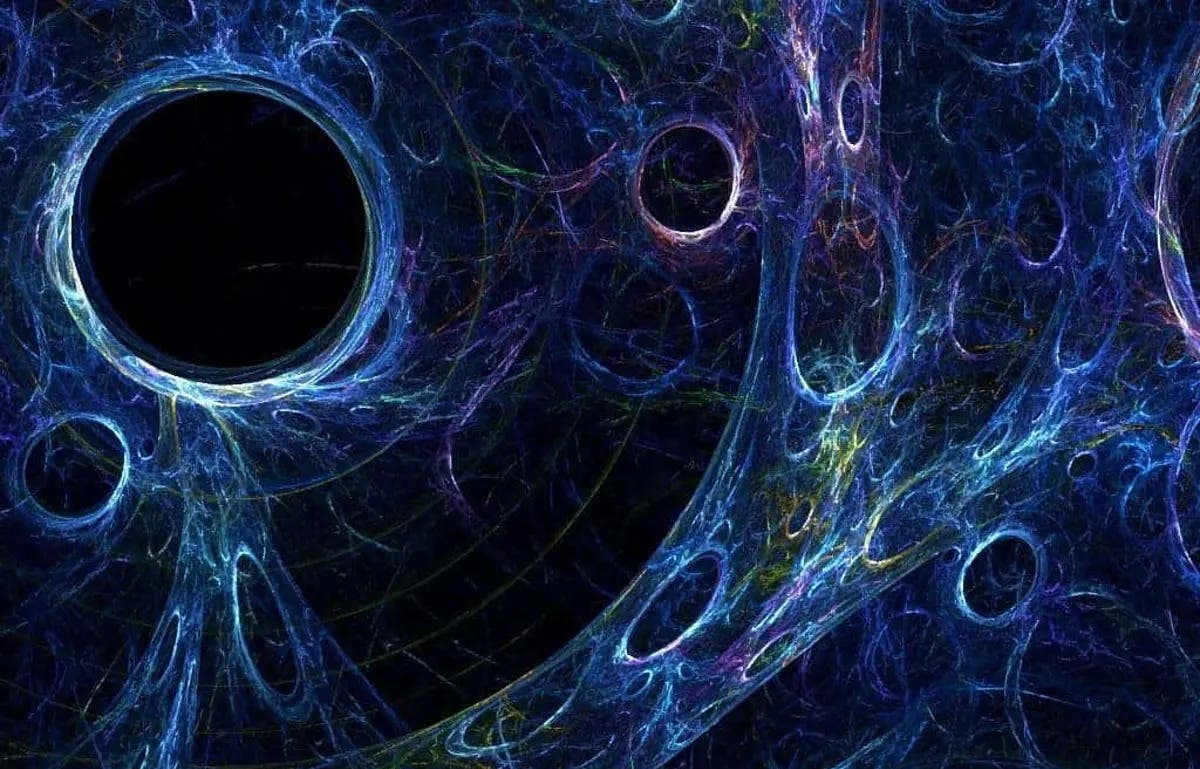Dark matter doesn’t exist in our universe, study finds
The composition of the universe, as we currently understand it, is thought to comprise ‘normal matter,’ ‘dark energy,’ and ‘dark matter.’

The composition of the universe, as we currently understand it, is thought to comprise 'normal matter,' 'dark energy,' and 'dark matter.' (CREDIT: tchaikovsky2, Deviant Art)
The composition of the universe, as we currently understand it, is thought to comprise 'normal matter,' 'dark energy,' and 'dark matter.' However, a recent study from the University of Ottawa sheds new light on this notion, suggesting that dark matter might not actually be a necessary component.
Dark matter is a term used in cosmology to describe entities that don't interact with light or the electromagnetic field, and can only be inferred through gravitational effects. Essentially, it's invisible and its composition remains a mystery, yet it plays a crucial role in our comprehension of the behavior of galaxies, planets, and stars.
Professor Rajendra Gupta, from the Faculty of Science at the University of Ottawa, conducted this groundbreaking study. He utilized a blend of the covarying coupling constants (CCC) and "tired light" (TL) theories, amalgamating them into what's termed the CCC+TL model.
This study challenges the prevailing understanding of the universe, which posits that approximately 27% of its composition consists of dark matter, with less than 5% being ordinary matter, leaving the rest attributed to dark energy. A composite image of colliding galaxies, which make up cluster Abell 2744. The blue represents dark matter, a kindred mystery to dark energy. (CREDIT: NASA/CXC/ITA/INAF/STScI)
This model proposes that the forces of nature diminish over cosmic time and that light loses energy during its extensive travels. Gupta's model has been rigorously tested against various observations, including the distribution of galaxies and the evolution of light from the early universe.
This study challenges the prevailing understanding of the universe, which posits that approximately 27% of its composition consists of dark matter, with less than 5% being ordinary matter, leaving the rest attributed to dark energy.
Gupta said, "The findings from our study affirm our prior research on the age of the universe, which concluded it to be approximately 26.7 billion years old, and demonstrate that the universe may not necessitate the presence of dark matter."
Related Stories
He further explains that while standard cosmology attributes the accelerated expansion of the universe to dark energy, it is actually the weakening of natural forces as the universe expands that drives this phenomenon, not dark energy.
The concept of "redshifts" plays a pivotal role in this study. Redshifts occur when light shifts towards the red end of the spectrum. Gupta scrutinized data from recent papers on galaxy distribution at low redshifts and the angular size of the sound horizon from literature at high redshifts.
Gupta notes, "While there have been several papers questioning the existence of dark matter, to the best of my knowledge, mine is the first to entirely dismiss its cosmological presence while remaining consistent with crucial cosmological observations that have stood the test of time."
By challenging the necessity of dark matter in the universe and furnishing evidence for an alternative cosmological model, this study paves the way for further exploration into the fundamental properties of the universe.
The study, Testing CCC+TL Cosmology with Observed Baryon Acoustic Oscillation Features, was published in the peer-reviewed Astrophysical Journal.
What is the difference between Dark Matter and Dark Energy?
Dark matter and dark energy are two distinct but mysterious components of the universe, with different properties and roles:
Dark Matter:
Dark matter is a form of matter that does not emit, absorb, or reflect electromagnetic radiation, making it invisible and undetectable through conventional means.
It interacts with ordinary matter and other dark matter only through gravity, which means it does not form atoms and molecules like ordinary matter does.
It was first hypothesized to explain the gravitational effects observed in galaxies and galaxy clusters that cannot be accounted for by the visible matter alone.
Dark matter plays a crucial role in the formation and structure of galaxies and galaxy clusters, as its gravitational influence binds them together.
While its exact nature remains unknown, various candidates for dark matter have been proposed, including weakly interacting massive particles (WIMPs), axions, and sterile neutrinos.
Dark Energy:
Dark energy is a hypothetical form of energy that permeates all of space and exerts a negative pressure, causing the expansion of the universe to accelerate.
Unlike dark matter, dark energy does not cluster in galaxies or galaxy clusters but instead appears to be uniformly distributed throughout space.
Dark energy was first postulated to explain the observation of distant supernovae, which suggested that the expansion of the universe is accelerating rather than slowing down due to gravitational attraction.
Dark energy is thought to constitute about 68% of the total energy content of the universe.
Its nature is even more enigmatic than dark matter, with proposed explanations including a cosmological constant (associated with vacuum energy), modifications to general relativity, or exotic fields such as quintessence.
In summary, dark matter primarily affects the gravitational interactions of galaxies and galaxy clusters, while dark energy drives the accelerated expansion of the universe on cosmological scales. Both remain significant puzzles in modern astrophysics and cosmology, with ongoing efforts to better understand their properties and origins.
Note: Materials provided above by The Brighter Side of News. Content may be edited for style and length.
Like these kind of feel good stories? Get the Brighter Side of News' newsletter.



